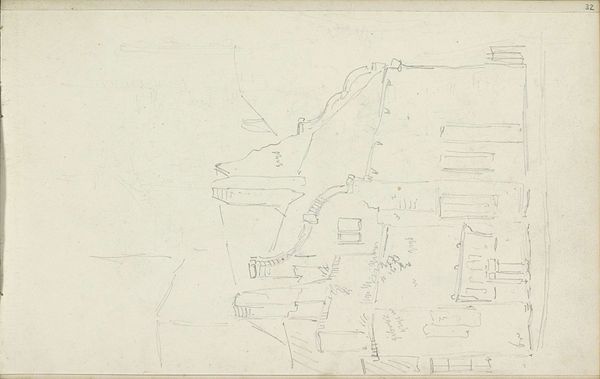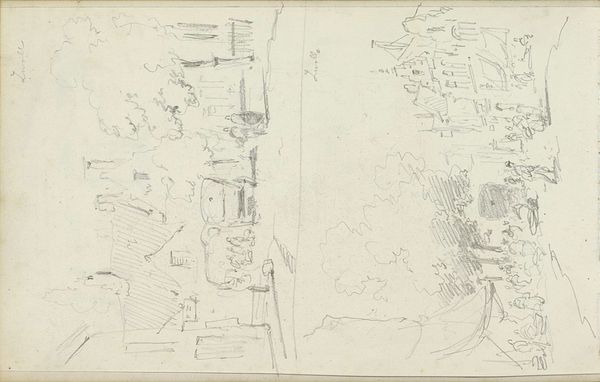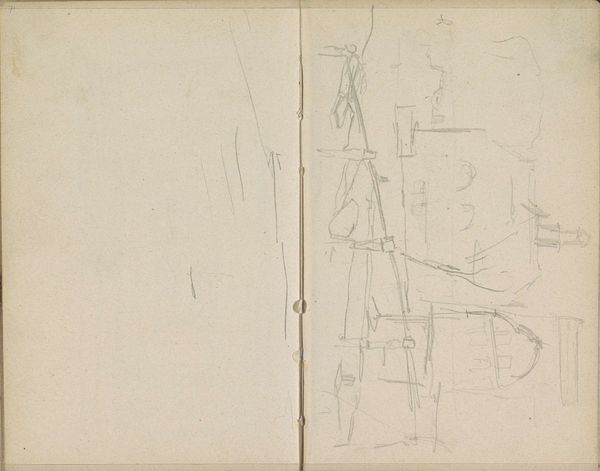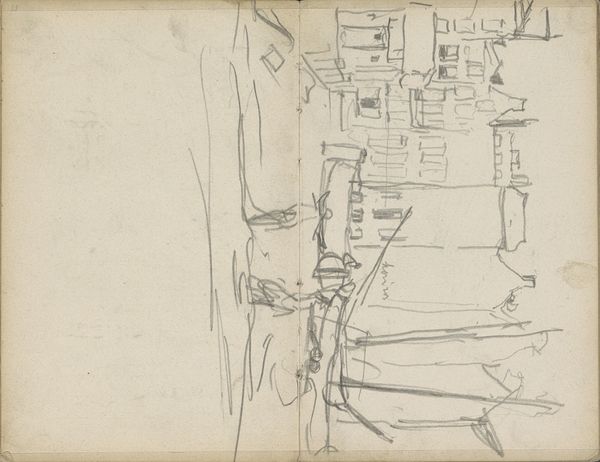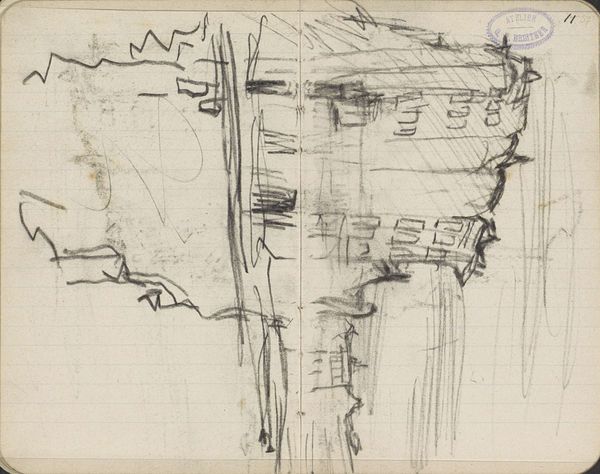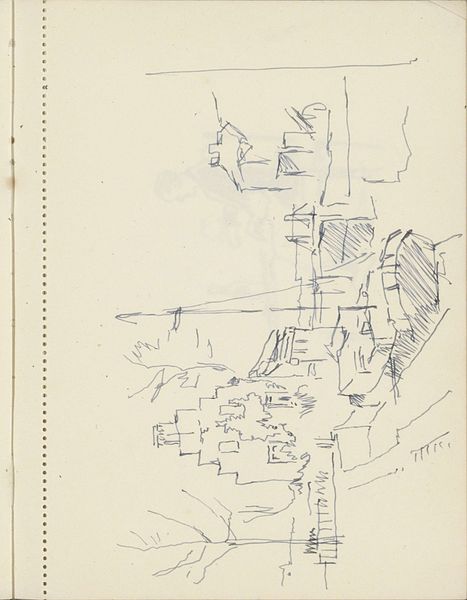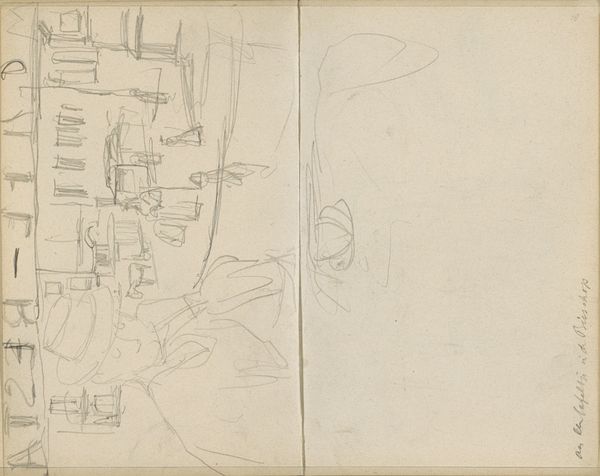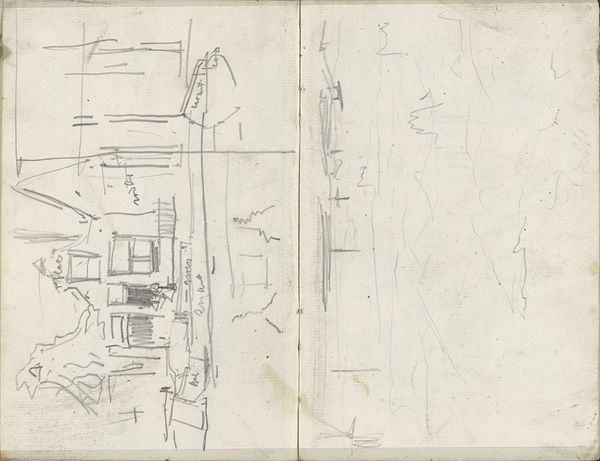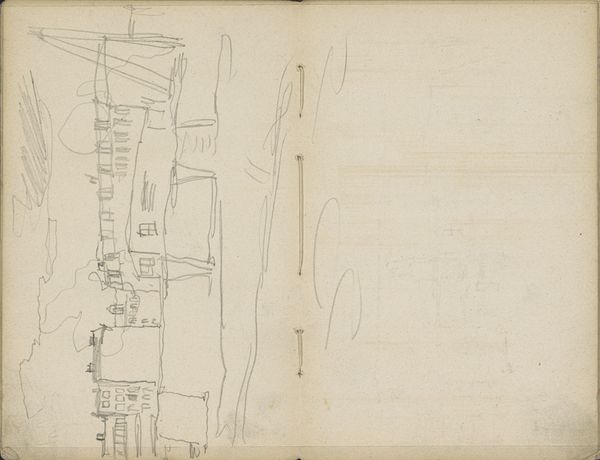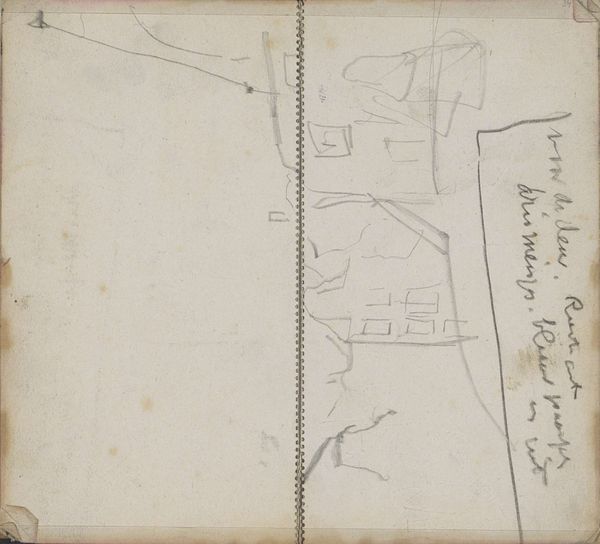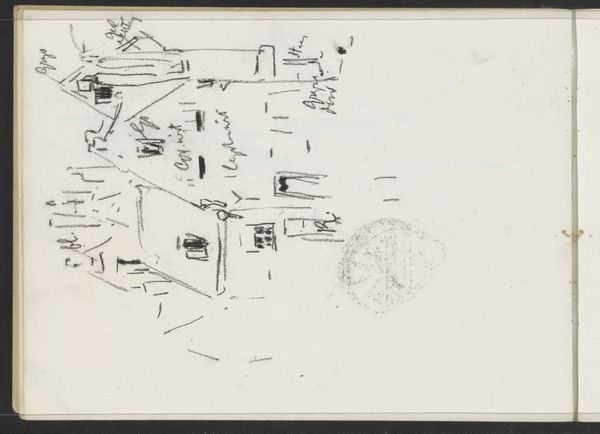
drawing, pencil
#
drawing
#
pen sketch
#
hand drawn type
#
landscape
#
personal sketchbook
#
idea generation sketch
#
sketchwork
#
ink drawing experimentation
#
pen-ink sketch
#
pencil
#
pen work
#
sketchbook drawing
#
cityscape
#
sketchbook art
Copyright: Rijks Museum: Open Domain
Editor: So, this is "Dorpsgezicht," or "Village View," a pencil and ink drawing from around 1916-1945 by Reijer Stolk, housed here at the Rijksmuseum. It feels like a quick sketch, something almost intimate from the artist's sketchbook. What do you see in it? Curator: Well, immediately, I'm struck by the informal nature, as you say. This isn't a finished work meant for display; it's a working document, a visual note. The period it was created in, 1916 to 1945, covers both World Wars and the Interwar period. Sketchbooks offer us a glimpse into an artist's unmediated world. This work raises questions about art’s role during wartime. Was Stolk documenting a reality under threat, or seeking solace in everyday scenes? Editor: That's interesting. I hadn't thought about the wartime context. Do you think the presence of handwriting influences how we should look at it? Curator: Absolutely. The handwritten notes provide a fascinating layer. Are they observations, annotations, or even planning notes for a future, more developed work? It makes me consider how the act of drawing, particularly in a sketchbook, functioned as a way of processing information and the world around them. Consider, for example, what access ordinary people would have had to recording technologies - photography was far less democratic. Editor: So, sketchbooks like these maybe offered a space for ordinary observation and even social commentary that might not have otherwise been seen? Curator: Precisely. It becomes a crucial piece of cultural record. If you look at the composition and Stolk's mark-making - where would you say his eye goes and what sort of statement, if any, might that make about this artist in his place and time? Editor: I see what you mean! It's less about high art and more about recording the everyday. It almost humanizes the period. Curator: Exactly. It reminds us that history isn’t just grand narratives, but the accumulation of individual experiences recorded in simple sketches like this. Editor: I never thought a simple sketch could reveal so much. Thanks, that really changed my perspective.
Comments
No comments
Be the first to comment and join the conversation on the ultimate creative platform.
